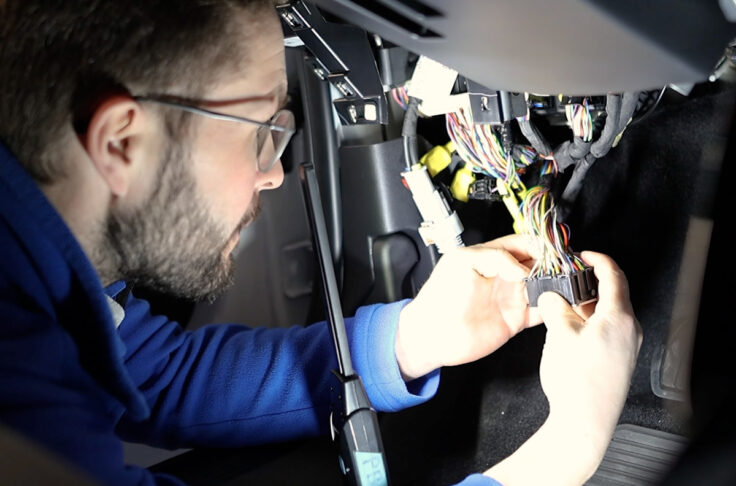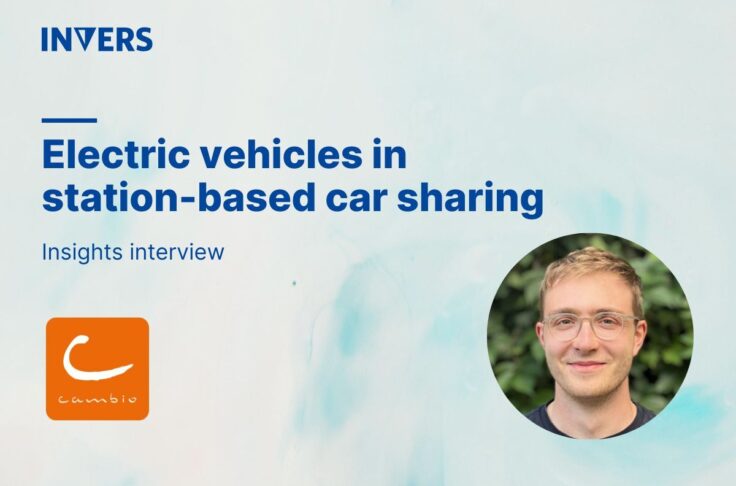Beyond Cost Savings: How Telematics Drives Growth

This article is Part 2 of our Telematics ROI series.
In Part 1: 6 Metrics that Prove Telematics ROI, we outlined the key metrics for calculating return on investment. Here, we go one step further to explore how telematics can unlock new business opportunities and power long-term growth.
Traditionally, fleet operators usually only measure telematics ROI through cost savings in fuel, maintenance, and reductions in downtime and damage. However, the true value of telematics goes far beyond expense reductions. Instead, it enables operators to scale efficiently, launch services competitors can’t match, and build partnerships that generate steady, recurring revenue.
This article explores four strategic growth opportunities made possible by telematics. Each one is an opportunity that doesn’t show up in a spreadsheet but makes all the difference in the real world.
Table of Contents
- Why traditional ROI calculations miss most of the telematics value
- Growth opportunity #1: Scale faster without adding staff
- Growth opportunity #2: Unlock revenue streams competitors can’t match
- Growth opportunity #3: Turn real-time data into a competitive advantage
- Growth opportunity #4: Build strategic partnerships that generate recurring revenue
- Where to start
- The ROI that changes everything
Why traditional ROI calculations miss most of the telematics value
Yes, telematics helps reduce fuel costs and prevent breakdowns, but those are just surface-level wins. Unfortunately, traditional ROI models focus on short-term savings and overlook long-term strategic value.
Instead, the real payoff comes from the new possibilities that telematics offers to operators. Specifically, new services, real-time optimization of asset use, and added transparency to help build trusted partnerships all fuel sustainable growth.
Rather than asking whether telematics can pay for itself, the better question is: what kind of growth is unlocked when the right telematics become part of your core operations?
Growth opportunity #1: Scale faster without adding staff

In the past, if operators wanted to expand their fleet of vehicles, they had to hire more staff. Consequently, growth depended on how quickly the company could find, train, and oversee new employees.
However, connected vehicle technology breaks that link. With real-time diagnostics, automated alerts, and remote controls, operators can manage larger fleets without increasing headcount. In other words, the size of a fleet is no longer directly linked to the number of employees in the company.
What this looks like in practice: Jewish Family Service’s story
Christina Swank, Associate Director of Administrative Services at Jewish Family Service of Atlantic County (JFS), manages a 60-vehicle nonprofit fleet. One morning, a low battery alert appears. Before drivers even arrive, Christina dispatches a jump-start, preventing delays. Meanwhile, mileage checks that once took hours now take minutes. With telematics, her team has shifted from reacting to problems to preventing them.
Growth opportunity #2: Launch revenue streams competitors can’t match

Telematics goes beyond just preventative maintenance and improving efficiency. It enables entirely new business models that were previously impossible using traditional methods, such as keys and clipboards.
Consider residential car sharing as an example. Developers can significantly reduce the number of mandated parking spots they need to build by installing shared vehicles on-site. Tenants then reserve and unlock them via an app. No concierge, key management, or extra staff.
What this looks like in practice: Quantum Mobility’s story
Bob Demetrescu and his team at Quantum Mobility offer Mobility-as-an-Amenity. Their vehicles are parked directly at residential properties, with garage access and dedicated spots. Residents get 24/7 access to vehicles through the Quantum app, just like they would access other amenities like the gym or rooftop patio.
For residents, it’s seamless mobility, while property managers benefit from fewer parking stalls and more rentable space. As for Quantum Mobility, having a reliable telematics system that works even in challenging environments like underground parking garages turns an idea into a steady revenue stream with minimal overhead, something a less capable system simply couldn’t support.
For operators already running car sharing with older or limited technology, upgrading to a more versatile and reliable system can be the difference between offering a basic service and unlocking entirely new, higher-margin opportunities.
And the Mobility-as-an-Amenity approach doesn’t stop with condominiums:
- Hotels offer on-demand rentals without front desk involvement.
- Companies share vehicles among employees without key management headaches or scheduling chaos.
These aren’t feature upgrades. Instead, they are new services that generate recurring, high-margin revenue and customer loyalty.
Growth opportunity #3: Turn real-time data into a competitive advantage

Traditional fleet planning often depends on assumptions and historical reports. However, in today’s rapidly changing market, expectations can shift weekly, and demand can fluctuate by the hour. Therefore, making decisions based on historical data can lead to missed opportunities.
Flexible telematics provides operators with the data to act in real-time. See when and where demand surges. Adjust pricing dynamically. Reposition vehicles ahead of peak periods. What this looks like in practice: Free2Move’s story
What this looks like in practice: Free2Move’s story
Clemen Schönberger, Director of Field Operations at Free2Move, uses gig drivers from Uber to rebalance their free-floating fleet throughout the day. The result? Cars are exactly where users need them. Compare that to the 38% of operators who, according to our webinar poll, don’t rebalance their fleets at all. Even small, informed moves can create huge advantages.
Additionally, telematics replaces guesswork with precision:
- Schedule maintenance based on real usage, not inflexible calendars
- Adjust pricing based on demand, weather, or competitor moves
- Make smart, fast decisions that boost margins and keep users happy
Growth opportunity #4: Build B2B partnerships that scale

Partnerships drive growth, but only if partners trust your service. Before telematics, operators said, “Trust us.” Now, with telematics, operators can provide concrete evidence: “Here’s our uptime stats, usage analytics, and maintenance logs. Here is the API integration. Here’s the dashboard displaying real-time performance metrics.”
This transparency not only wins over property managers, delivery platforms, and hospitality providers, but it also opens doors to entirely different types of partnerships.
Cities and municipal authorities want data to justify allocating curb space or dedicated parking. Meanwhile, universities seek reliable, self-service vehicles to reduce student parking demand. Beyond these, other creative arrangements are emerging:
- Developer partnerships where car sharing fleets replace costly parking construction, freeing up space for more units.
- Municipal parking agreements that allow operators to place vehicles in high-demand areas like transit hubs.
Ultimately, these opportunities don’t come to operators with unreliable systems or patchy service. Instead, they go to those who can demonstrate reliability, transparency, and performance through their telematics data. Each partnership builds credibility. Subsequently, every success story wins the next deal. Reliable telematics is the foundation of that trust, leading to long-term contracts, premium pricing, and sustainable growth.
Where to start
You don’t need to pursue every growth path at once. Start where your fleet needs it most:
- Are you expanding soon? Focus on Growth Opportunity #1.
- Looking for a new revenue stream? Start with Growth Opportunity #2.
- Need to differentiate from the competition? Prioritize Growth Opportunity #3.
- Simply want stability? Focus on Growth Opportunity #4.
Avoid the common trap of viewing telematics as merely a tool for connectivity and cost reduction. That’s like buying a smartphone just to make calls. You’ll miss out on 90% of its potential.
The ROI that changes everything
Cost savings are easy to measure. However, the biggest ROI from telematics comes from what it makes possible. Good telematics pays for itself. Great telematics builds what’s next.
Ready to go beyond cost savings?
Let’s discuss how telematics can unlock new opportunities for growth in your fleet. Book a strategy call or explore our solutions to see what’s possible.


